The first version of the Umana Yana to be built in the city of Georgetown was close to the Pegasus hotel in 1972, designed by Guyanese architect Mr. George Henry. It was built on the site of old Marine’s club and took 80 days to be completed. The word “Umana Yana” is of indigenous origin used mostly by the Wai Wai Amerindians to describe the huge benabs which is used as their meeting place. It is an Amerindian expression for “meeting place of the people”.
Location of Umana Yana
The Umana Yana is located on High Street, Kingston, Georgetown.
Construction of the Umana Yana
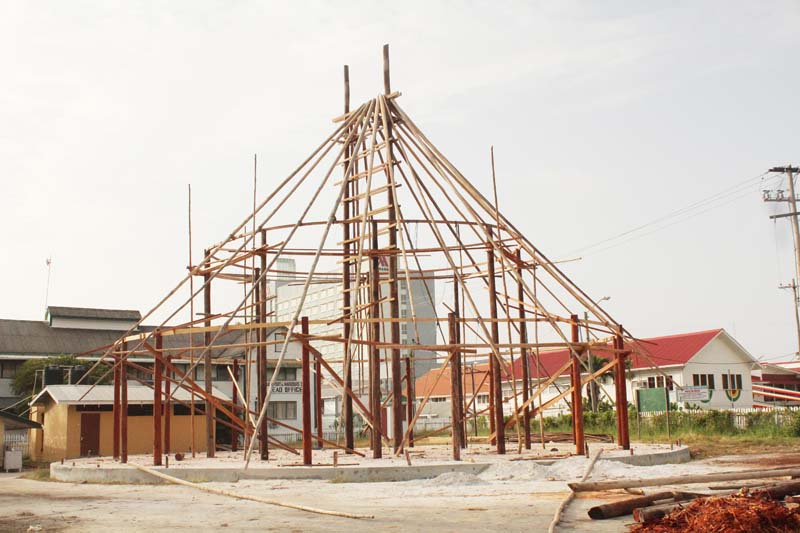
Construction of the Umana Yana (KNews Image)
The Umana Yana was built by approximately 60 Wai Wai men which was one of the nine indigenous tribes of Guyana and their chief Elka who were transported from Konashen and Rupununi to Georgetown. Adding to that, core materials for the structure was also transported to aid in the construction of the Umana Yana. However, the condition of the benab deteriorated overtime which caused it to collapse in 1993. A smaller benab was then re-built around 1995 and on April 07, 2001, it was gazetted as a National Monument along with the African Liberation Monument. In 2003, it was refurbished and was subsequently destroyed by fire on September 09, 2014 after which reconstruction of the third benab started in late 2015 and was completed in 2016. According to William McDowell, who has published possibly the most detailed story of the original Umana Yana, (Guyana Review, April 1995) “it reminded the world that it is natural for people to build with materials at hand, and that Amerindian culture is still vibrant.” According to him, indigenous buildings are known for their coolness in our tropical heat because of the natural materials used, especially the thatch roof. Thatch is a generic term for a roof of dry vegetation such as leaves, reeds etc. which are plaited, as there are different forms of thatching depending on the materials available and the tradition of the community. According to the website of the Ministry of Culture, Youth and Sport “a circular area of the lawn, about 26.8 metres in diameter was cleared of grass and excavated, the soil leveled and compacted to a smooth hard finish by the Wai Wai who stomped the ground, feet unshod, moving rhythmically forward, backward and round and round as in a sort of tribal dance. Sand was then placed over the area and a concrete foundation slab; complete with holes for the insertion of the poles was laid to protect the structure from dampness, given the nature of the shallow water table of the coastal soils.”
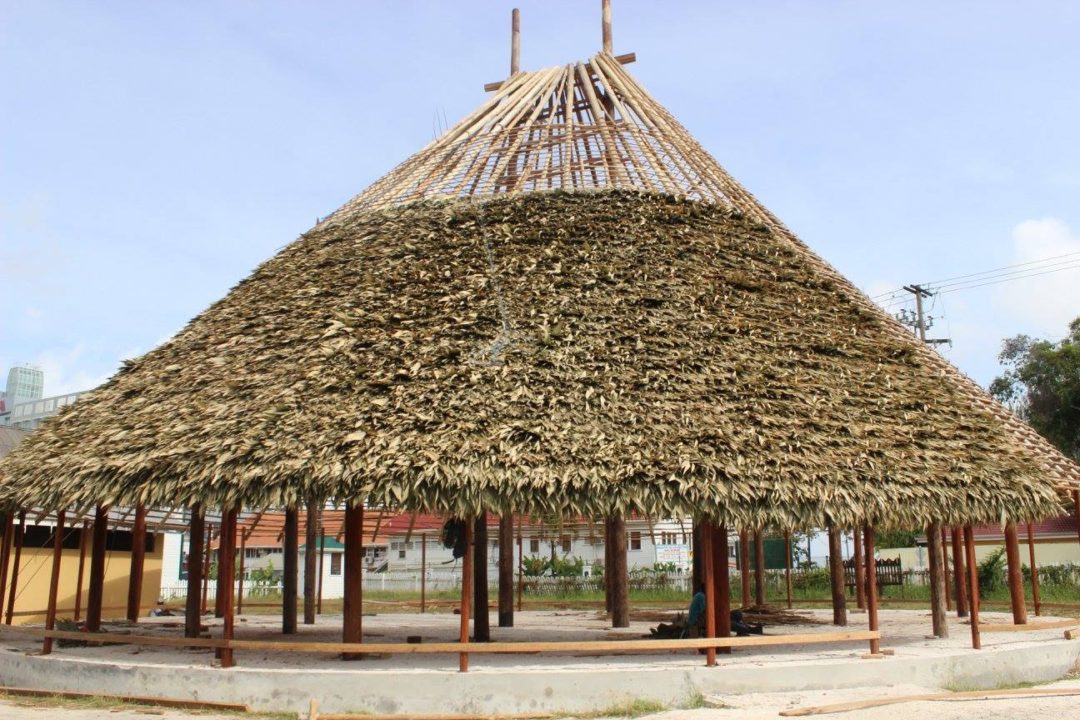
Taking Shape (INews Image)
According to the Ministry’s website, without an adequate space to host to the meeting, the planning committee chose an Amerindian benab given limited funds and time for construction. Thereafter, the Asia-Africa Conference held in Bandung, Indonesia in 1955, the Non-Aligned Movement (NAM) established criteria for membership to countries that maintained their independence and resisted pressure from the major powers. With 120 member countries and 17 observer countries, including China, NAM’s focus has changed from its early preoccupations with the cold war and colonialism, to addressing socio-economic challenges facing member states’ and resistance of western hegemony.
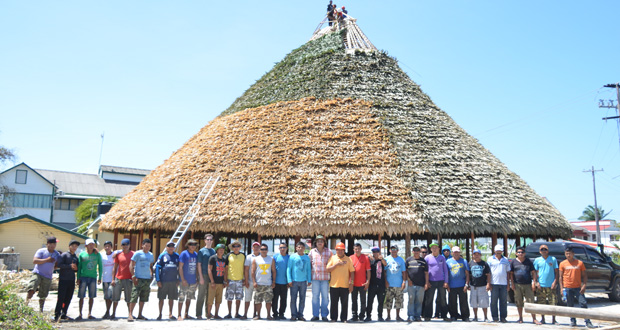
Toshao Paul Chekema (centre) and Advisor on Indigenous People’s Affairs, Mervyn Williams, with members of the team working on the conical palm-thatched roof of the Umana Yana (Guyana Chronicle Image)
Features of the Umana Yana
The Umana Yana is 55-foot high in the shape of a cone and made out of thatched allibanna and manicole palm leaves, wallaba posts and mukru, turu and nabbi vines. In Guyana the major vegetation used by the indigenous peoples for thatched roofing includes the troolie palm, the cokerite palm and the dhalebanna leaf.
The construction of the benab did not include nails. This benab is similar to the Wai-Wai benabs or shelters found deep in Guyana’s interior. It shelters an area of approximately 460 square meters making it the largest structure of its kind in Guyana. Further, in the compound of the Umana Yana one can find the African Liberation Monument which represents all those who have struggled and continue to struggles for freedom from human bondage. This was erected on August 26, 1974 and unveiled by President Linden Forbes Sampson Burnham.
Purpose of the Umana Yana
In August 1972, the Non-aligned Foreign Ministers Conference was held in Georgetown. As a result, the construction of the benab was specifically designed to serve as a V.I.P lounge and recreation spot during this time. Today, the most famous indigenous attraction is a permanent structure and serves part of Georgetown’s scenery. Adding to that, it is now used as an exhibition and conference centre.
The nostalgia created by the destruction of the Umana Yana by fire
Social media posts by Guyanese illustrated a general sentiment of sadness stemming from pictures of the fire. Some persons reflected on their memories of attending different activities at the Umana Yana including concerts, weddings, fashion shows, horticultural shows, lectures, and Amerindian heritage events. Social media posts also registered a sense of distrust that the fire was set on purpose to provide space for private interests.
Today, the Umana Yana is standing strong and continues to be the one of Georgetown’s most scenic attraction.
Article References
- http://nationaltrust.gov.gy/umana-yana-african-liberation-monument/
- http://steve-powell.tripod.com/guyana/pictures/country/umana_yana.htm
- https://guyaneseonline.net/2010/10/02/umana-yana-meeting-place-of-the-people/
- https://www.guyanatimesinternational.com/the-story-of-umana-yana/
- https://www.stabroeknews.com/2014/features/09/15/umana-yana-just-building/
- https://en.wikipedia.org/wiki/Umana_Yana
- Main Image: KennardP: Umana Yana (via Flikr)

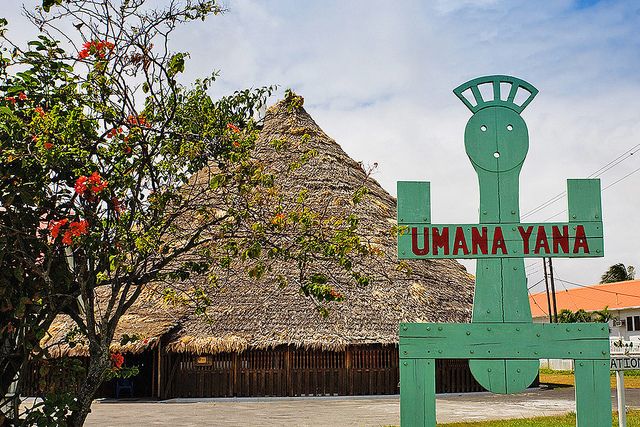
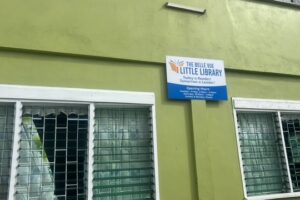
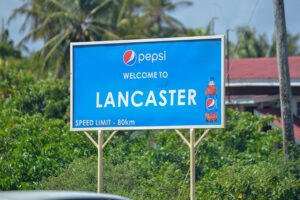
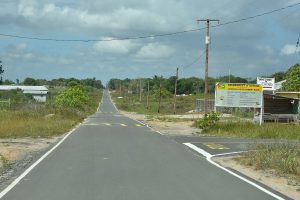
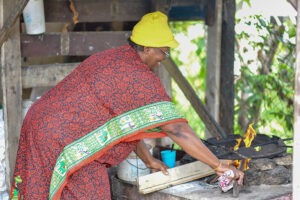
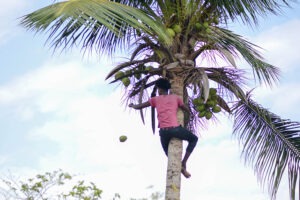

1 Comment